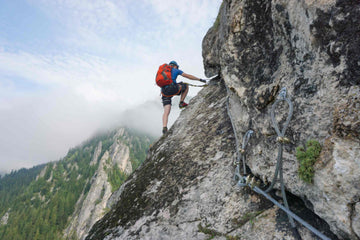
At TheAdventureGears.com, we firmly believe that everyone should have the opportunity to experience the great outdoors, irrespective of whether they are seasoned hikers or neophytes. Nevertheless, acquiring the right navigation skills is indispensable to ensure a safe and enjoyable hiking experience. To this end, we will proffer expert advice on navigation basics to aid you in becoming a more proficient and confident hiker.
Comprehending the Compass
The compass is arguably one of the most crucial tools for hikers, as it helps you ascertain your direction and navigate through unfamiliar terrain. There are two types of compasses, namely the baseplate compass and the lensatic compass. The baseplate compass is the more ubiquitous of the two and is the preferred option for novices. It is equipped with a transparent base that enables you to view the map underneath, and it comes equipped with a ruler and protractor to assist you in gauging distances and angles. On the other hand, the lensatic compass is the more intricate of the two and is commonly utilized by military personnel. While it is more accurate, it is also more convoluted to operate.
Employing a Map
A map serves as a visual representation of the terrain that you intend to traverse. It delineates the trails, landmarks, and topography of the area. Prior to embarking on your hike, it is imperative to ensure that you possess a map of the area and acquaint yourself with it. Take note of the landmarks that will aid you in navigation, such as rivers, mountains, and valleys. Pay attention to the contour lines, which denote changes in terrain elevation. It is advisable to keep your map within reach at all times and to refer to it regularly to remain on course.
Pursuing Trail Markers
Trail markers represent another indispensable tool for navigation. They are usually positioned at regular intervals along the trail and aid you in staying on course. These markers can take several forms, such as painted blazes on trees or rocks, cairns (piles of rocks), or metal signs. It is important to ascertain what the markers look like before embarking on your hike and to keep a vigilant lookout for them. In the event that you haven't seen a marker in some time, stop and retrace your steps to ensure that you haven't veered off course.
Navigating with GPS
Global Positioning System (GPS) devices are becoming increasingly prevalent amongst hikers. They utilize satellite signals to ascertain your location and help you navigate through unfamiliar terrain. Nevertheless, they should not be wholly relied upon for navigation, as they are susceptible to failures or loss of signal. It is advisable to always have a map and compass on your person as a backup and to be cognizant of how to utilize them.
Conclusion
Navigating through the great outdoors can present challenges; however, with the right skills and tools, it can also prove to be a gratifying experience. By gaining a basic understanding of navigation, you can become a more confident and proficient hiker. Always remember to keep a map and compass at the ready, familiarize yourself with trail markers, and consider utilizing a GPS device as a backup. Here's wishing you an enjoyable hiking experience!





